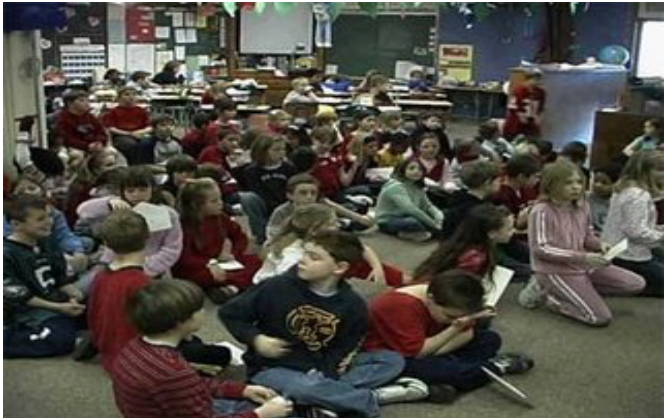CommentsLA WATCHDOG--More money will not solve the problems of the Los Angeles Unified School District because Angelenos do not trust the system to properly educate their children.
Over the last decade, people have voted with their feet. The number of LAUSD students has dropped by a third, from 750,000 to under 500,000. About half of these 250,000 “lost” students now attend publicly financed, better performing charter schools while others are enrolled in religious or private schools or have moved to other school districts.
Of the remaining 485,000 LAUSD students, about 80,000 attend the popular magnet schools.
Overall, about one third of the District’s 600,000 students attend charter or magnet schools. This does not include the many students on the waiting list for these two desirable alternatives to the traditional underperforming public schools.
Families and students have bailed for many reasons. They want their children to have an education that prepares them for the future. They do not want their children to be part of a social experiment. They want their children to be in safe environment, free from disruptive in-class trouble makers and gang influences. And families and the public do not trust the District’s poor results and misleading disclosures, especially when it comes to grade level performance and graduation rates.
On Tuesday, January 22, LAUSD and United Teachers Los Angeles announced an agreement to end the six-day strike. But there were no new details about how to finance this deal that was essentially the same as the final LAUSD offer prior to the strike. Nor is there a plan for the long-term success of the District and its students.
[Note: The strike cost LAUSD $150 million in lost attendance-based revenue from the State. Teachers also lost $100 million in wages.]
This implies that the County Office of Education and the Office of the State Superintendent of Education will review and analyze the District’s financials to determine whether there are adequate reserves. But this presents a problem because prior to the settlement, LAUSD anticipated that it would be in violation of County and State regulations based on its final offer, especially since the District has a prestrike operating deficit of $500 million a year.
This is “leap of faith” budgeting, a risky financial strategy that is being promoted by Mayor Eric Garcetti.
Another possible stumbling block is whether the School Board will pass an UTLA sponsored resolution requesting the State to conduct “comprehensive study to inform future policy considerations for charter authorization reform” and urging the State Legislative “to impose a cap on new charter schools approved in our school district.” At this time, the Board is split 3-3 between pro and anti-charter members.
On March 5, voters go to the polls to elect a replacement for Ref Rodriquez who resigned because of campaign financing violations. UTLA is supporting the fiscally irresponsible Jackie Goldberg, a veteran politician. If she is elected, LAUSD will return to the old way of running the schools, limiting charter and magnet schools, depriving many students of a chance for a better education in a safer environment. [The runoff, if necessary, is on May 14.]
The School Board will also need to address its budget shortfall of $500 million a year and its “leap of faith” financial hijinks. The Board will most likely reconsider placing on the ballot a $600 parcel tax that will raise $500 million if approved by the voters. This decision will be influenced by the upcoming election.
This ballot measure will have the support of Garcetti. Or put another way, when have Garcetti and the City Council not supported a tax increase?
There is also the issue of the timing of the parcel tax since the District may be short of cash prior to the November 2020 election. This is where the State may play a role by either increasing financing to LAUSD (and other troubled school districts like Oakland) or serving as a bridge lender.
Another source of financing is from the “split roll” which, if approved by the voters in November of 2020, would result in a windfall of $300 to $400 million to LAUSD. This ballot measure is also supported by Garcetti.
A significant portion of this new money will not make it to the classroom because the funding requirements for $22 billion of retirement liabilities (medical and pension) and $12 billion of long-term debt will be in the front of the line.
So many moving parts. Leap of faith budgeting. A resolution calling for a cap on charter schools. A school board election involving the swing vote. A parcel tax ballot measure. The split roll ballot measure. State financing.
But where is the strategic plan that outlines how LAUSD will improve its performance and its standing with Angelenos? Will this strategic plan address teacher quality, tenure, the ability to dismiss poor teachers, and promotions based on merit? What is the roll of charter and magnet schools? Will LAUSD downsize its bloated bureaucracy to free up money for the classroom? How does the District propose to reform its retirement plans? How will it repay its long-term debt and maintain its facilities? And how does the District propose to eliminate its Structural Deficit?
Will LAUSD and UTLA be able to win the support of Angelenos? Will it be able to build trust in its brand? Stay tuned. It is going to be a wild ride as UTLA will place its revenue and membership goals in front of those of the students.
(Jack Humphreville writes LA Watchdog for CityWatch. He is the President of the DWP Advocacy Committee and is the Budget and DWP representative for the Greater Wilshire Neighborhood Council. He is a Neighborhood Council Budget Advocate. He can be reached at: [email protected].)
-cw














